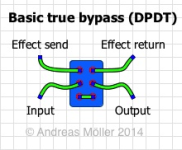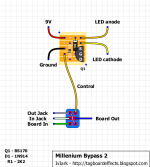radam84
Member
Im wondering if anyone has any experience using these: https://theelectronicgoldmine.com/products/g26867
in place of 3pdt footswitchs, if so how would you wire it up? Also would it be feasible to open a regular 3pdt footswitch and replace the interanls with one of those(linked) to make a softer click switch? I know boss uses a similar type switch and Im wanting to figure out a way to do something similar.
in place of 3pdt footswitchs, if so how would you wire it up? Also would it be feasible to open a regular 3pdt footswitch and replace the interanls with one of those(linked) to make a softer click switch? I know boss uses a similar type switch and Im wanting to figure out a way to do something similar.





